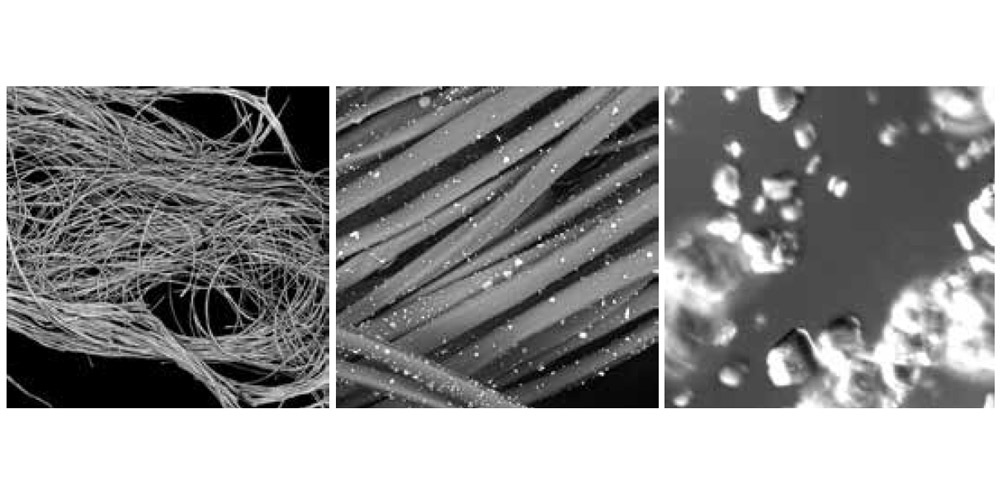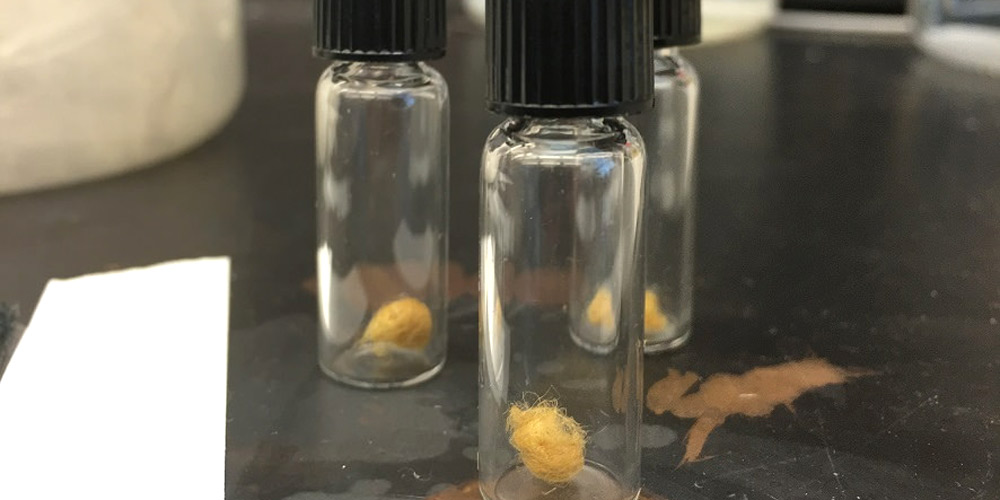
Joe Davis
In his Artist Lab, Joe Davis deals with what modern alchemy looks like and whether it even still exists. Humankind has already achieved so many things that had previously seemed impossible. Is there still even room for such wonders? Davis answers in no uncertain terms: YES. His two works show how alchemy and the search for the miraculous can survive, even in this day and age. For “Bombyx Chrysopoeia,” he raised genetically engineered silk moths whose woven silk fibers can incorporate metals like gold or platinum. “Astrobiological Horticulture” isn’t about a recipe for gold but rather the elixir of life itself. The organisms bred here could theoretically survive even on Mars.
While earning his Creative Arts degree (1973) from Mt Angel College in Oregon, Joe Davis pioneered sculptural methods in laser carving at University of Cincinnati Medical Center Laser Laboratory and Bell Telephone Laboratories, Murray Hill, NJ. In 1981 he joined MIT Center for Advanced Visual Studies as Research Fellow and Lecturer. In Poetica Vaginal (1986-7) and Rubisco Stars (2009) Davis sent the most powerful and lengthy radio messages ever transmitted to other stars. Davis joined Alexander Rich’s laboratory at MIT in 1989 where he is widely regarded to have founded new fields in art and biology. In 2010, he joined the laboratory of George Church at Harvard as “Artist Scientist”. Davis and collaborators genetically modified silkworms for production of biomineralized transgenic silks in 2011, and initiated Astrobiological Horticulture in 2016 to create organisms suited for survival on Mars.

Credit: Carly Nix
Bombyx chrysopoeia
In Bombyx chrysopoeia, we have created genetically modified silk moths (Bombyx mori). These produce silks containing silicatein, a biomineralizing protein drawn from the marine sponge, Tethya aurantia. The sponge uses silicatein to form its silica (glass) endoskeleton from silicic acid, the most abundant form of soluble silica in seawater. In our silk moths, the gene for silicatein is fused with a gene for fibroin, the principal protein in silk. Here, we take advantage of the fact that silicatein is a promiscuous protein, and will sequester other metals if there is no silica in the surrounding media. Silks spun by our genetically modified silkworms are first “degummed,” a process traditionally employed to remove sericin, a waxy coating that naturally appears on all silks. Fibers are then treated with a chelating agent to remove any traces of metal accumulated by the fusion protein in the process of cocooning. Finally, transgenic silks are exposed to solutions containing dissolved heavy metals. As a result, these silk fibers integrate selected metals such as gold or platinum. With this method, many other metals and metal compounds can now be integrated with silicateinized silks to produce fibers with unprecedented material properties for both art and science. These may have a number of applications. One possibility is that genetically modified silks could be used to take up radionuclides and other reactor meltdown byproducts at nuclear accident sites like Chernobyl and Fukushima. At the same time, the notion that silk worms can be created with the ability to spin silks integrating metallic gold recalls episodes of magic and legend that go back deep into history. We rely on art to bring dreams to light and in this sense, our silk moths evoke another kind of fine fabric.
Experiments planned for 2016 Ars Electronica Festival include real-time biomineralizations of transgenic silks.
Credits: In collaboration with Tara Gianoulis (US), Mariko Kasuya (JP) and Hideki Sezutsu (JP)

Astrobiological Horticulture
Paleomicrobiological De-Extinctions and Extraterrestrial Simulants
Astrobiological Horticulture explores the possibility of creating organisms that can survive in widespread deposits of cold Martian brines now known to exist just below the Martian surface. While searching for suitable genes and candidate organisms, my collaborators and I have also been reviving ancient microorganisms, up to 400 million years old. These have somehow been preserved in crystals of mineral salts over enormous periods of geological time, and are now examples of by far the oldest “de-extinctions” to date. In this case, Elixir of Life is a hypersaline growth medium incubated with externally sterilized salts at 50° C. Furthermore, we have been engaged in a series of experiments at the MIT Nuclear Reactor Laboratory in an effort to discover and evaluate genes thought to impart radiation resistance to halophilic (salt loving) archaebacteria, prokaryotic bacteria, and other organisms. The goal is to stitch together a suite of genes for traits including salt tolerance, radiation resistance, an oxygen-producing perchlorate metabolism, psychrotrophism (cold tolerance), and other characteristics needed to prepare organisms for survival on Mars, and perhaps for survival in other extraterrestrial environments.
Experiments for 2016 Ars Electronica Festival include revivals of cryptobiotic archaebacteria from mineral salt samples initially deposited hundreds of millions of years ago in Europe, Asia and North America.
Credits: In collaboration with James Monaghan (US) Ashley Seifert (US), Prof. Jennifer Bender (US), Jeff Nivala (US), Seth Shipman (US), Conor Camplisson (US), Emma Kowal (CN), Tom Bork (US), Bill McCarthy (US)

